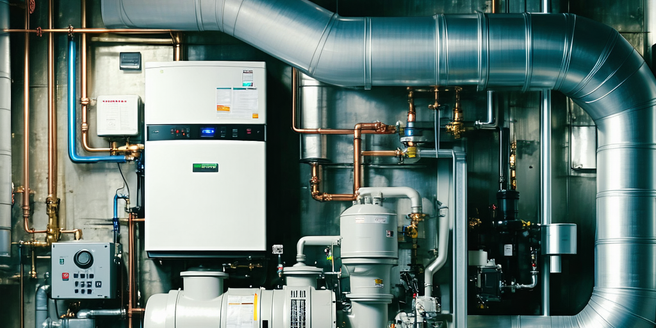Home Maintenance Budgeting Strategies

Understanding Your Home Maintenance Needs
Understanding your home maintenance needs begins with assessing the age, condition, and usage patterns of various components within your home. Knowing when systems like plumbing, roofing, and HVAC require attention helps in anticipating natural wear and tear. Start by creating an inventory of all major home systems and appliances, noting their age and average lifespan. Regular inspections are key to identifying potential issues early, allowing you to address minor repairs before they evolve into costly projects. Additionally, consider the local climate, as it can impact the maintenance needs of your home significantly. For instance, homes in areas with heavy rainfall may require more frequent roof inspections, while those in sunny regions need regular checks on air conditioning systems. Educating yourself about your home’s specific maintenance demands ensures that you can allocate your budget wisely and effectively.
Setting a Realistic Home Maintenance Budget
Setting a realistic home maintenance budget involves understanding both predictable and unpredictable expenses. Start by reviewing your home’s past maintenance costs to establish a baseline and identify any patterns in spending. On average, homeowners should allocate 1-4% of their property’s value annually for upkeep. Consider the age and condition of your house, as older homes may require more frequent repairs. Break down your budget into categories including routine maintenance, repairs, and emergency funds. Separate funds for each category each month to avoid unexpected financial strain. Additionally, it’s crucial to reassess your budget regularly to account for changes in property needs or personal finances. By setting a practical and flexible budget, responding to maintenance needs in a timely manner becomes more manageable, preventing small issues from escalating into larger, more expensive problems.
Prioritizing Essential Maintenance Tasks
Prioritizing essential maintenance tasks ensures the safety, efficiency, and longevity of your home. Start by categorizing tasks into immediate, short-term, and long-term needs. Immediate tasks should address safety hazards or structural damages like leaks or exposed wiring. Short-term tasks may include seasonal duties like gutter cleaning or HVAC servicing, while long-term tasks involve larger projects such as roof replacement. Use a priority matrix to gauge the urgency and impact of each task. Consider the associated costs and time requirements to plan your finances and schedule accordingly. It’s vital to balance these priorities with your daily routine, ensuring that essential maintenance tasks do not interfere with your lifestyle. Proactive prioritization and consistent monitoring of maintenance tasks reduce the potential for emergency repairs, saving both time and money in the long run.
Saving Tips for Maintenance Emergencies
An emergency fund dedicated to home maintenance is essential for handling unexpected repairs. Begin by setting a monthly savings target that aligns with your maintenance budget, typically around 1% of your home’s value annually. Automated transfers to a separate savings account can ensure regular contributions without impacting daily expenses. Evaluate your insurance policies to understand the coverage provided for emergencies, and consider increasing coverage if necessary. Staying informed about common emergency repairs, such as plumbing leaks or electrical failures, can help you estimate potential costs and adjust your savings goal. Additionally, practice proactive maintenance by addressing minor issues promptly, minimizing the likelihood of extravagant emergency expenses. Building a robust emergency saving plan, combined with astute foresight in maintenance, equips you to handle unforeseen situations with ease, avoiding potential financial strain.
Creating a Seasonal Maintenance Schedule
Creating a seasonal maintenance schedule is an efficient way to manage home upkeep systematically throughout the year. Begin by listing all essential tasks specific to each season. In spring, focus on inspecting the roof, clearing gutters, and preparing your lawn and garden. Summer is ideal for exterior painting or repairs, while fall requires HVAC servicing and cleaning of gutters in preparation for winter. Winter checks include monitoring for ice dams and ensuring heaters are functioning efficiently. Prioritize tasks that optimize energy usage and contribute to the structural integrity of your home. By scheduling tasks seasonally, you can distribute maintenance efforts evenly, preventing burnout and unexpected workload spikes. Additionally, this approach allows you to budget throughout the year, aligning finances with corresponding maintenance requirements, ensuring your home remains safe and efficient.
DIY vs. Hiring Professionals: Cost Analysis
Evaluating the costs of DIY versus hiring professionals involves understanding the scope, complexity, and risks associated with each task. Simple maintenance tasks like painting or replacing filters can often be completed independently, saving labor costs. However, tasks involving electrical work, plumbing, or structural repairs may require professional expertise to ensure safety and compliance with regulations. Calculate the expenses of tools, materials, and the estimated time required for DIY projects, comparing these to professional quotes. Keep in mind that while DIY can be cost-effective, mistakes may lead to higher expenses in the long term. Additionally, a professional’s expertise may offer warranties and quicker turnaround times. By conducting a thorough cost-benefit analysis for each task, homeowners can make informed decisions that balance skill, budget, and time constraints, optimizing maintenance spending effectively.